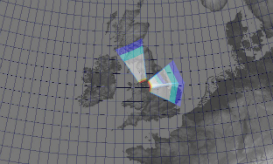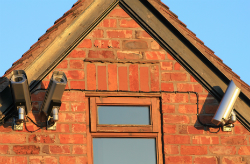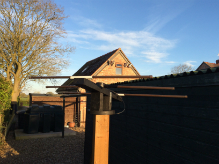Welcome to NEMETODE
Network for Meteor
Triangulation and Orbit Determination
William Stewart Ravensmoor, Cheshire, England |
Camera / Lens Combination: Watec 902H / Computar 8mm f0.8, Az 340.2, Ev 39.7 Watec 902H / Computar 8mm f0.8, Az 067.0, Ev 45.1 Watec 902H / Computar 8mm f0.8, Az 103.2, Ev 43.4 Watec 902H2 Ultimate / Computar 12mm f0.8 Az 62.7, Ev 48.3 (Spectral, 600 g/mm) |
||
William Stewart has been fascinated by the night sky for just about as long as he can remember. Growing up under the dark skies of Northern Ireland, there were ample opportunities for basic visual observations. Since then his interest has expanded to include spaceflight and astrophotography and he now gives regular talks to schools and societies ... and, when he finds the time, launch the occasional rocket! He became interested in video meteor detection work following a chance discovery on eBay during the summer of 2010 when he found some fast, short focal length c-mount camera lenses for sale. Realising that these would fit to a low light video camera that he already had from some previous experiments (observing satellites) he went ahead and purchased them. His first permanently mounted camera setup was Ravensmoor North (commissioned in October 2010 - right hand camera in the above image) followed by Ravensmoor East in March 2011. A third camera was commissioned in January 2013. Research on the web highlighted the value of dual station collaborations such as that between Robert Cobain and Armagh Observatory, METREC or the SonotaCo Network but initial attempts to find a collaborator proved fruitless until he stumbled across a forum posting by Alex Pratt. In October 2015, William deployed a 4th camera dedicated to spectral analysis.
Early in 2016 William deployed a system for detecting meteors via radio using the GRAVES RADAR that is located near Dijon in France. With extensive help from Paul Hyde, the system was optimised in March 2016. Antenna Receiver Further information and links relating to the detection and analysis of "radio" meteors can be found on Chris & Victoria's page.
|
||


